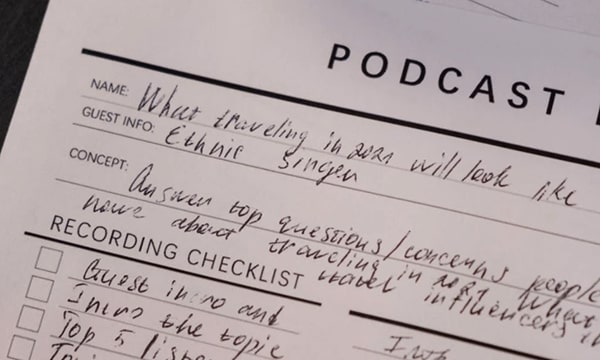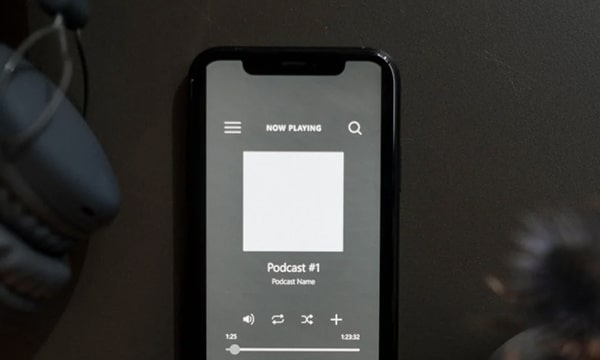
 It’s almost 2022. Have you started a podcast yet? Now is the time because they aren’t slowing down. Don’t worry if you haven’t already, or if you have other things to get in order before you can. We’ve put together a few must-haves and actionable steps you can get working on to get you launched and listening. The best time to start a podcast was yesterday. The second best time to start is now!
It’s almost 2022. Have you started a podcast yet? Now is the time because they aren’t slowing down. Don’t worry if you haven’t already, or if you have other things to get in order before you can. We’ve put together a few must-haves and actionable steps you can get working on to get you launched and listening. The best time to start a podcast was yesterday. The second best time to start is now!
Before you begin, consider your audience. Who are you speaking to? Why should they listen? Why are you doing it? This is about knowing exactly who is interested in what you have to say. Who is going to resonate with your message? What’s in it for them? What value can you provide? Create their persona by imagining everything about them. What does your audience eat? What kind of hobbies do they like? Who are their friends and family? What do they do for work?
This is the first step, albeit a big one! Once you feel like you know what your audience is into, you can move on with the following things you need to help you launch your podcast:
Clever, descriptive, or your own name; whichever you choose, use simple, straight-to-the-point language that reflects your content.
Podcast lengths greatly differ; Some are bite-sized at 10 minutes while others are 2-3 hours or longer! Once a month is great, twice a month is better. Whatever you choose, just try to remain consistent.
Use exciting, descriptive, and easily searchable keywords. Stay away from numerical episodes and treat each title like a magazine headline.
Solo? Co-hosted? Panel? Doc? What way will best support your content? You can use a mix of all of them, but generally, you’ll naturally stick to one.
All you need is a computer with a standalone microphone and access to the internet. This is enough to get going. As you get more advanced, you’ll probably want to upgrade your equipment. As for software, choose a podcast platform like TalkShoe that can handle hosting, creation, distribution, marketing, recording, streaming, and more.
(alt-tag: Two professional young women seated and posing for camera with podcasting mics in front of them.)
 6. Creating A Show Script
6. Creating A Show ScriptCat got your tongue? Not if you have a script! This isn’t your average word-for-word script though. The very nature of podcasting is conversational, so as long as you have some key points, it’s up to you to fill in the blanks!
Your voice is an instrument so it pays to know how to use it! Vocal warm-ups and a knowledge of how your voice can be used softly or loudly help. Imagine you’re speaking to people instead of a mic in a four-wall room!
Got a virtual co-host? Reaching out to remote guests? Get a feel for the tech you’re using so you can avoid glitches, delays, and snafus.
Will you be editing or hiring someone else? Editing isn’t always necessary, but if you want to correct background noise or make the delivery sound a little more seamless, try looking into freelance sites like Upwork and Fiverr to make any corrections.
It’s not mandatory, but it sure adds a nice layer! Use it for the intro and outro and for less than 10 seconds for an even more professional-sounding podcast.
Small but mighty, your podcast cover art gives listeners a clue about your podcast. Make it simple and not too detailed. You can set this up yourself in Canva or hire a designer.
Find a media hosting service like TalkShoe that can help you host, store and share your podcast. Get set up with an RSS feed, and live streaming services for multiple options and choices.
Once you’re recorded and ready to be heard, use your hosting service to submit to heavy hitters like Apple Podcasts, Spotify, and more.
When it comes to growth and monetization, there are a few factors that determine whether you’ll be able to make money from your podcast:
i. Content:
Choose a topic that best represents you and can lead to a sustainable podcast. Is your heart in it? If so, it’ll show and resonate with your listeners. Not only will you be able to eventually profit financially, but you’ll also be able to make a difference in people’s lives.
ii. Presentation:
Be aware of how your voice and projection come across in your podcast. You want to be passionate and enthusiastic instead of bored. Pro delivery and performance skills not only sell your content, but also sell you, and that’s how ad dollars begin to follow you!
 iii. Building Community:
iii. Building Community:
Especially in the digital world, the only way to communicate is through online interactions. Not only are you reaching out to your audience, but your audience is also reaching out to each other. Creating opportunities for interaction instills trust and support.
(alt-tag: Close-up photo of iPhone showing a podcast playing on screen.)
Get recording with the new TalkShoe, your one-stop-shop for recording and launching your podcast. Everything you need is in one place. Use TalkShoe’s virtual studio to record with others remotely. Store, distribute, monetize and syndicate easily and seamlessly. Start your journey here.
Download our checklist with a list of questions to support you on your podcast creation journey. >>